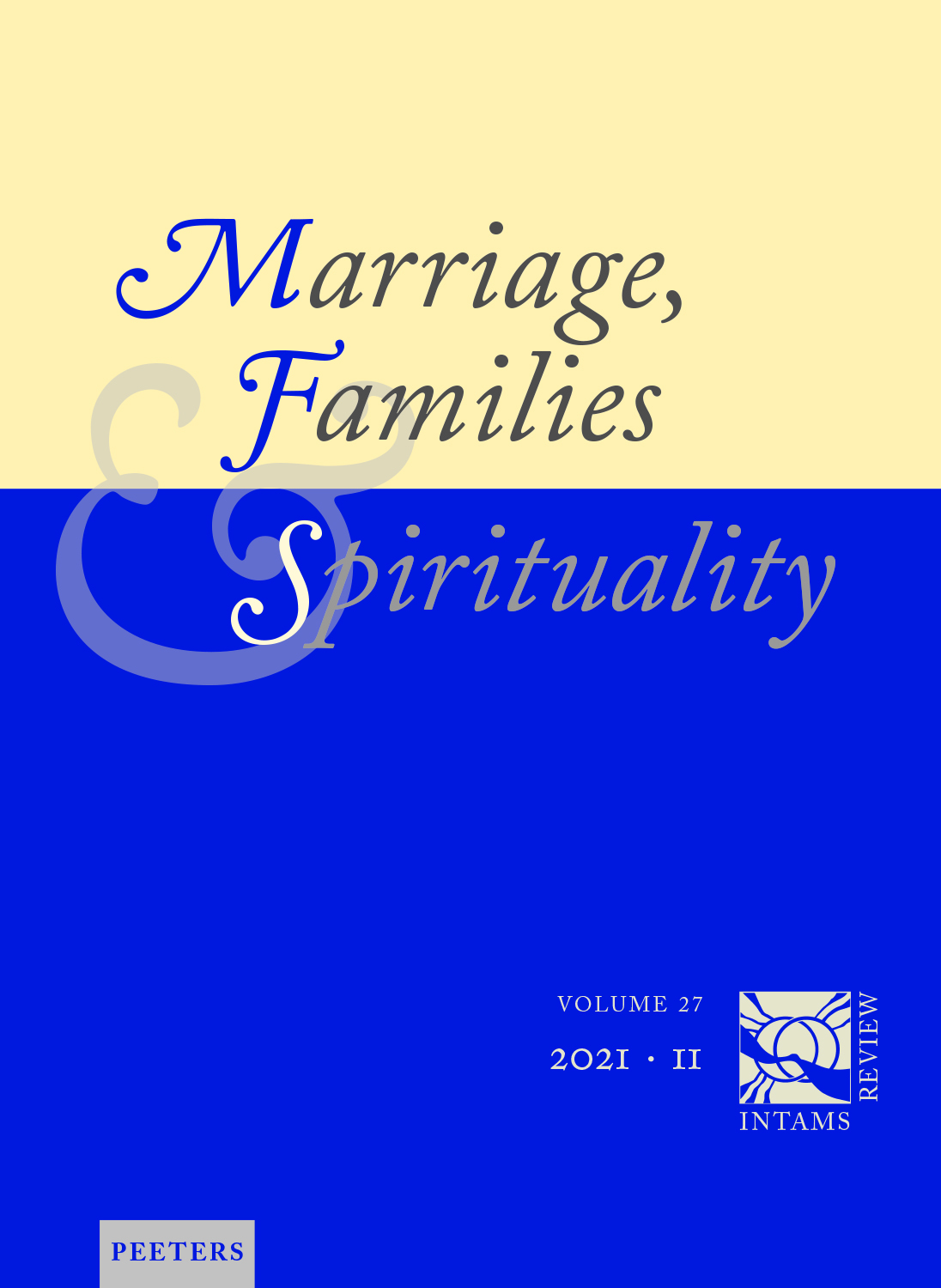 previous article in this issue previous article in this issue | next article in this issue  |

Preview first page |
Document Details : Title: The Sacramentality of Marriage as a Primary Model of Discipleship Author(s): KELLY, Thomas M. Journal: Marriage, Families & Spirituality Volume: 7 Issue: 1 Date: 2001 Pages: 13-25 DOI: 10.2143/INT.7.1.2004529 Abstract : This article proposes to further examine the desire to experience God, in the encounter with another in the relationship of marriage. As the title of this piece suggests, one must first begin by examining what one means by sacramentality. Once designated, how can such sacramentality be true, intrinsically, of marital relationships? And finally, how can such a sacramental relationship function as a primary form of discipleship both in service to the church and in service to the world? The author suggests that marital relationships do “serve”, do provide a model of discipleship, by providing both the participants and their family unit with a unique way of encountering each other, one’s immediate community (church), and the wider society. The broad understanding of sacramentality presupposed for this article understands “sacrament” to cause the effective acceptance of grace, wherever found. This grace, this communication of God is agapic love, the end for which we are created. It is a love, roughly translated by Saint Thomas, that effectively wills the good of the other. It is important not to sentimentalize or romanticize such love, for to effectively will the good of another may in fact mean to challenge not only one’s self, but the subject of one’s love, quite forcefully. This deep and rich meaning of agape is the most appropriate understanding for the intrinsic sacramentality of married love. But if all marriages that realize agapic love are sacramental in the broad sense, what is the use of speaking of marriage and discipleship in the context of church? The author argues that those married in the church can become sacraments for both the church and for the world. When Christian marriages come to effect what they signify, such a model of relating can strengthen any community. Any community engaged in agapic praxis encounters the world and bespeaks God. This ought to be the primary manner in which we understand ourselves as disciples, both individually and corporately. Reflection upon marital sacramentality already being lived can make this vision of discipleship more explicit and accessible to church members. In doing so, it can deepen the experience of married love in the context of community. The result will be a deeper commitment to the “other” both within the community itself, and for the world it engages. Thus, what Christian marriage “says” in Rahner’s sense of symbol, can render visible God’s love for the world. |
|


